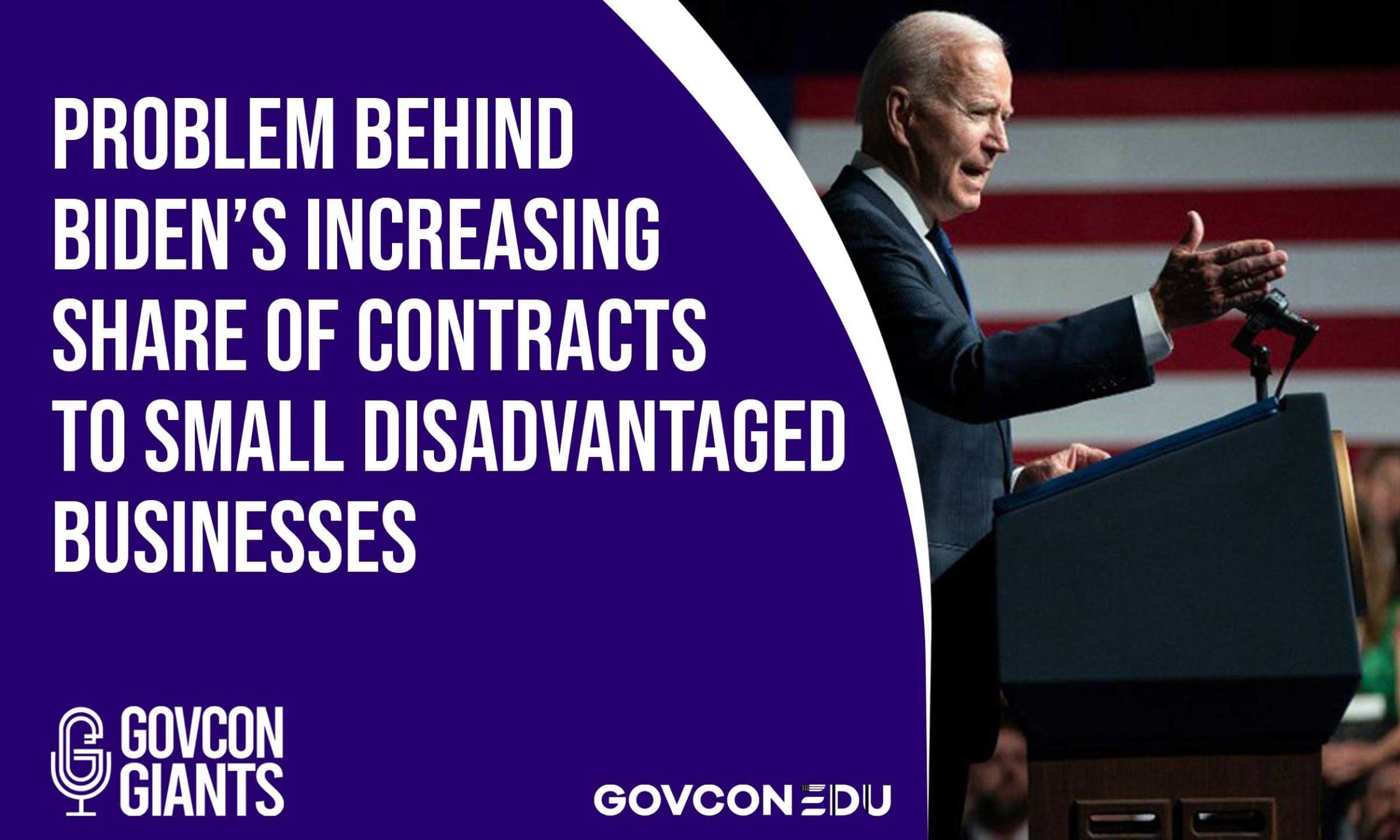There is a problem behind Biden’s Increasing Share of Contracts, and I am here to talk about it.
The Biden-Harris administration is launching a government-wide effort to increase by 50% the share of contracts going to small, disadvantaged businesses by 2026.
The administration plans on expanding federal contracting opportunities for undeserved small minority businesses across the country. The general goal is to lower barriers and increase opportunities for small businesses.
In a statement made by Bibi Hidalgo, associate administrator for government contracting and business development at the Small Business Administration, to Government Executive, she said that the agency “is proud to be ushering in a new era for small business contracting.”
Although it’s excellent news that the government is taking action to narrow down the racial wealth gap, there are underlying issues that need to be addressed.
CATEGORY MANAGEMENT & BEST-IN-CLASS
What is category management & best-in-class (BIC)? This is the government’s current preferred method for procuring goods and services. For the federal government, this is one of the most effective and efficient ways of buying products.
This method involves multi-year contracts with large dollar amounts. To award these contracts, the government chooses from a select group of contractors. While that sounds like the usual government procurement process, there is more to it.
For a small business to even be considered by these contracts, they need to pre-qualify first. The challenge with that is the fact that the pre-qualifications are high.
It’s understandable that they would set high pre-qualification standards since they are working with billions of dollars. The threshold, however, is so high that it has become almost impossible for most small businesses to be included in the list.
Some of these pre-qualifications would require small businesses to have millions of dollars in revenue or have hundreds of employees, which creates an additional barrier to most small businesses.
IMPACT ON SMALL BUSINESSES
Going back to the administration’s plans on closing the racial wealth gap, it’s evident that the intent is for the good of all, as they are addressing wealth inequality. However, it still needs improving because, ultimately, the numbers show that it’s doing nothing for the little guys.
In an article published in May 2021 by the U.S. Women’s Chamber of Commerce, It was said that between FY 2017 and FY 2020, America lost 24% of small business federal suppliers, and they attribute that loss to category management.
Ironically, the vehicle intended to solve the problem is making things worse and is driving most of the small businesses out of the marketplace.
WHAT CAN SMALL BUSINESSES DO
1. QUESTION THE GOVERNMENT
No one denies that the administration’s plan is a great concept, but it’s a different story when it comes to its implementation.
The government needs to go down two levels and figure out the root of the problem. So, I encourage small businesses, like yourself, to ask the government.
Ask the government how you can participate if you don’t qualify for BIC solutions. Ask them who small businesses should run to when they are unable to meet the prequalifications. Ask them if all the money intended for small businesses goes to BIC or other opportunities are available.
After you’ve done your market research and figured out who buys your services, have conversations with them about this topic. This is a great dialogue for people in this industry.
The more we talk about it, the more we question the government’s plans, the more likely they are to provide clear answers.
ADVICE FOR THOSE STARTING OUT
When you’re new to the industry, hearing news like this is exciting because, in theory, it is excellent news, but I want you to understand that sometimes there’s more to the story than what meets the eye.
So, this is where building relationships come in. When you start going out and connecting with people in the government contracting industry, you become less ignorant of the realities.
Often, the realities may not be as good as we would’ve preferred them to be, but when you are aware, you can make more informed decisions, and now, you can be more involved.
RESOURCES
If you want to learn more about the tips and tricks in winning government contracts, then join us here at GovCon Giants.
You could also visit our website and other social media platforms or check the new GovCon Edu, where you learn everything about government contracting!
To learn more about the topic above, check these resources below:
Administration intends to double share of contracts going to small businesses

